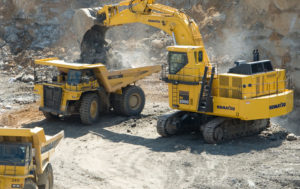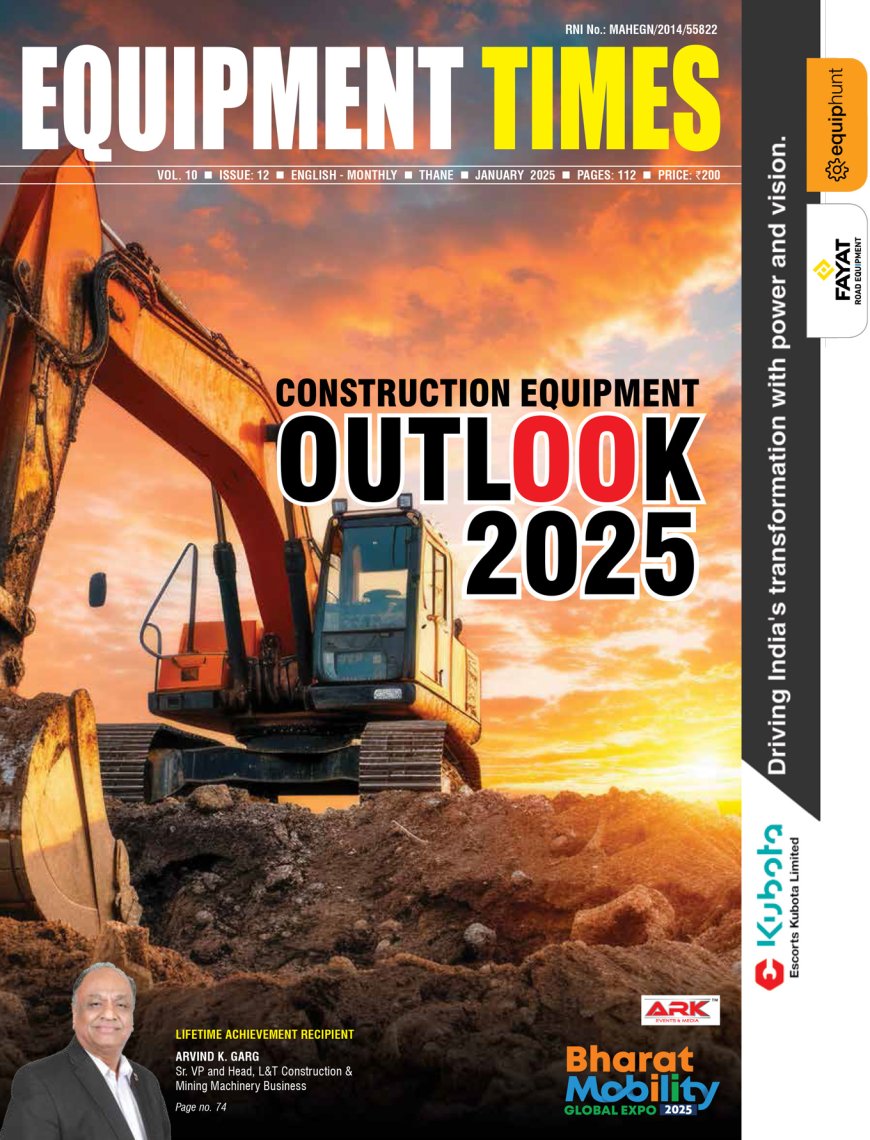Application Engineering in Mining Machinery Space
Having an optimum fleet is an ultimate desire of any end user. Komatsu and L&T have been involved closely with many mining companies in offering optimum fleet for the desired output. Cost per tonne is the oft-used term in mining


Having an optimum fleet is an ultimate desire of any end user. Komatsu and L&T have been involved closely with many mining companies in offering optimum fleet for the desired output.
Cost per tonne is the oft-used term in mining parlance today which has become the single most important factor in selection of machines and processes. Companies involved in mining and the OEMs are in a continuous race to find and adopt simple and innovative methods to reduce ‘cost per tonne’ for producing the desired output.
Technological evolution of mining machines over the last decade or so has resulted in machines being more productive, reliable, cost effective, adaptable to various operating conditions, and the list goes on. However, these machines have to ultimately work at sites, with each site being unique. This uniqueness, be it the strata, the density, the mines plan which has its bearing on bench heights and haul road design, the operating and maintenance regimen, etc, bring about a variability which can affect the output of the machines.
One needs a keen eye to decipher the unfavourable conditions from favourable ones, generate and analyse data to bring out planned recommendations, to reduce the effect on machine performance due to these variables. This is where the Application Engineering aspect of mining machinery team comes to the fore.
Understanding of factors that inhibit productivity and reliability of machines is key to resolve most of the application engineering related issues for a given machine / fleet. Let us take case of a dump truck, where, as per the fundamental knowledge, it is a given, that power required to move the vehicle equals rolling resistance plus grade resistance. Since the largest segment of round trip time of a dump truck comprises of its hauling and return time, any increase in rolling resistance and/or grade resistance will not only have an effect on the power required but also drastically increase the round trip time (cycle time). While the increase in power required will reflect in higher fuel consumption and prolonged use on similar terrain may also have its effect on the durability of powertrain unit, higher cycle time will lead to loss of production or mismatch of the fleet deployed. Cost per tonne becomes the casualty here.
Continuing from the example given, it is needless to say that haul roads are the lifeline of any surface mine and are as important an element as an excavator or dump truck in achieving the desired production. We at Komatsu and L&T continuously engage with our customers to offer our services to identify areas that can inhibit productivity and economical aspect of machines and provide recommendations for improvements.
Deploying a standard spec machine in a unique operating environment can be detrimental to the health of the machine. Hence it becomes important for correct selection of specs, such as boom and arm length, bucket capacity, counter weights, GET selection, etc. Application engineering team works out the correct combination to suit the material on which the machine will be deployed, to improve productivity and longevity of the machine.
Technological evolution has also touched the application engineering aspect too, with hi-tech tools and customised software being used to map the operating conditions to better understand the pain areas. Haul road mapping is done using GPS tool and this data is then analysed using customised softwares, which is capable of performing sensitivity analysis of load Vs total resistance Vs speed Vs fuel consumption. This analysis helps in not only optimising the haul road but also in optimising the fleet. One less truck to get a similar production after the alteration of haul course gives a better return on cost per tonne.
Today all Komatsu mining machines come with the benefit of ICT intervention, Komtrax Plus is one of them. There are sensors mounted on most of the important areas to not only map pressures, spikes, temperature, etc. of various systems on the machine but also measure payload on dump trucks. This data when downloaded is of immense use for the team handling maintenance and also the end user so that the productivity and fuel consumption can be mapped effectively.
Machine operator is probably the most important person in the entire chain who is solely responsible for obtaining the desired output. He also plays a great role in improving the life of the machine by avoiding operations that can be harmful for machine systems and structures. It is in this context that one needs to have an expert intervention with the operating staff, so that correct operation techniques, effective use of energy saving practices, pre-empting unsafe acts, etc. are inculcated.
Be it a greenfield or a brownfield project, having an optimum fleet is an ultimate desire of any end user, Komatsu and L&T have been involved closely with many mining companies in offering optimum fleet for the desired output. While the technology plays its part in providing fleet calculations, the importance and the efficacy of the application engineer involved can never be over emphasised. He is the person who has to possess the requisite skills to understand the ground reality, continuously seek inputs, analyse loads of data and then work using his entire experience to come up with solution that finds acceptance among a larger group.
Hits: 59










